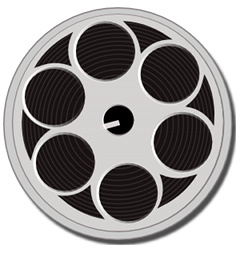 According to a report released last month by the Academy of Motion Picture Arts and Sciences, best known as the group behind the Oscars, the movie industry is getting ready to face a crisis in movie archiving. Ironically the problems are being caused not by aging celluloid (film) but rather the move to digital filmmaking.
According to a report released last month by the Academy of Motion Picture Arts and Sciences, best known as the group behind the Oscars, the movie industry is getting ready to face a crisis in movie archiving. Ironically the problems are being caused not by aging celluloid (film) but rather the move to digital filmmaking.
For consumers digital video has been a blessing. It puts at our disposal capable of creating projects comparable to some Hollywood productions, and best of all it does so in a form that's cheaper than ever. Unless the technology is constantly evolving and you need to archive hundreds of hours of video every year and keep them for decades (or even centuries) which is exactly what all the major studios typically do.
With actual film the process is relatively simple. Given good environmental conditions it can last in relatively good condition for well over 100 years. With the interest in preserving copies of films for future re-re-re-releases on the latest and greatest consumer formats this has long been standard practice. Unfortunately with digital media it's not that simple. While it costs an estimated $1,059 to store a film master for a year, the cost increases more than ten-fold to $12,514 for a digital master.
And that doesn' include extras like additional footage that didn't make the final cut and a variety of audio, video, and still pictures generated during production. The entirety of a production, including scripts, film negatives, audio recordings, and production photos from a film-based production can be stored for an annual cost of less than $500. Digital productions, on the other hand, can cost as much as $208,569 to fully archive in a similar manner.
There are essentially two problems that appear to be the root causes of these spiraling costs. The first is simply the reality of data storage. While storage technology is certainly cheaper than its ever been, if you need guaranteed reliability and redundancy there's nothing that beats hard drives. Other technologies are cheaper in the short run, but due to limitations of technology will be less reliable, more time consuming to maintain, or both. Of course even hard drives have their limitations, and must be spun periodically to keep the moving parts working. In addition the requirements for archiving result in a need to use more reliable, and also more expensive enterprise hardware. If all that weren't enough, the technology behind digital film production is changing all the time. With many changes comes new types of data that must be stored.
If you don't think the studios are concerned about this you're mistaken. According to analysts at Global Media Intelligence catalog titles (ie not new releases) are responsible for 35% of a studio's revenue right now. So they have a lot of incentive to keep everything, albeit at a lower cost than right now. As the report says “If we allow technological obsolescence to repeat itself, we are tied either to continuously increasing costs — or worse — the failure to save important assets.”
Source: New York Times
With actual film the process is relatively simple. Given good environmental conditions it can last in relatively good condition for well over 100 years. With the interest in preserving copies of films for future re-re-re-releases on the latest and greatest consumer formats this has long been standard practice. Unfortunately with digital media it's not that simple. While it costs an estimated $1,059 to store a film master for a year, the cost increases more than ten-fold to $12,514 for a digital master.
And that doesn' include extras like additional footage that didn't make the final cut and a variety of audio, video, and still pictures generated during production. The entirety of a production, including scripts, film negatives, audio recordings, and production photos from a film-based production can be stored for an annual cost of less than $500. Digital productions, on the other hand, can cost as much as $208,569 to fully archive in a similar manner.
There are essentially two problems that appear to be the root causes of these spiraling costs. The first is simply the reality of data storage. While storage technology is certainly cheaper than its ever been, if you need guaranteed reliability and redundancy there's nothing that beats hard drives. Other technologies are cheaper in the short run, but due to limitations of technology will be less reliable, more time consuming to maintain, or both. Of course even hard drives have their limitations, and must be spun periodically to keep the moving parts working. In addition the requirements for archiving result in a need to use more reliable, and also more expensive enterprise hardware. If all that weren't enough, the technology behind digital film production is changing all the time. With many changes comes new types of data that must be stored.
If you don't think the studios are concerned about this you're mistaken. According to analysts at Global Media Intelligence catalog titles (ie not new releases) are responsible for 35% of a studio's revenue right now. So they have a lot of incentive to keep everything, albeit at a lower cost than right now. As the report says “If we allow technological obsolescence to repeat itself, we are tied either to continuously increasing costs — or worse — the failure to save important assets.”
Source: New York Times













